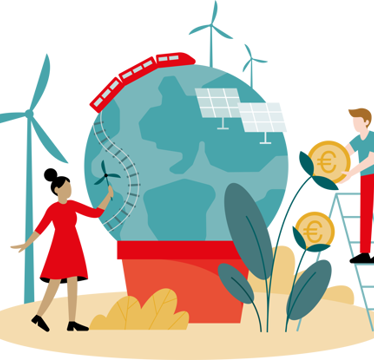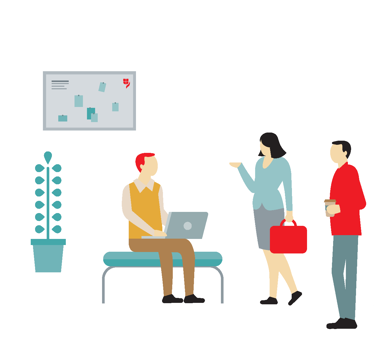Operations
While greenhouse gas emissions arise in the “Asset Management” and “Underwriting” spheres of impact, they also arise in day-to-day operations. This includes, on the one hand, office buildings with their energy consumption for electricity, heating and cooling and, on the other hand, mobility, which comprises the vehicle fleet and business travel – especially by aeroplane. As part of its sustainability programme, VIG has set itself the goal of becoming climate neutral in this area by 2030. To do this, the first step is to reduce emissions and the second step is to compensate or offset any residual emissions.
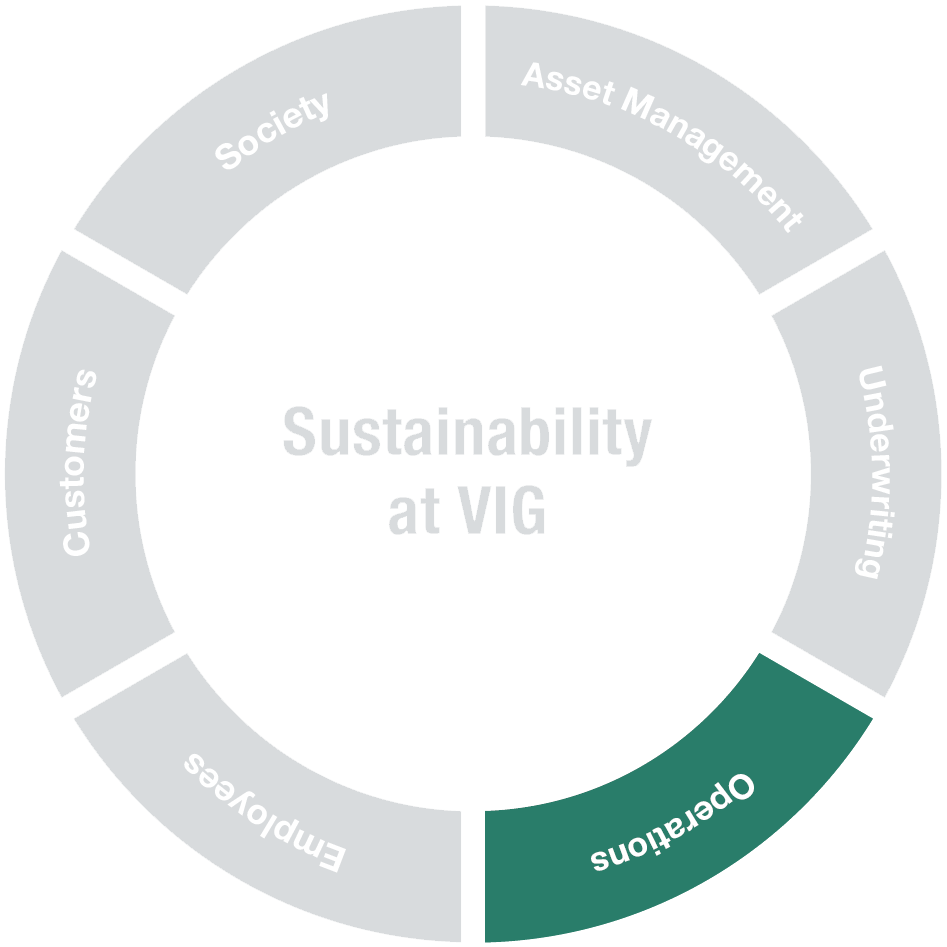
VIG calculates its annual emissions from office operations
The following table shows information on energy consumption in offices and kilometres of air travel of the consolidated companies of VIG. Total energy consumption includes electricity consumption, heating and cooling energy and the fuel consumption of the vehicle fleet. In addition the table also shows the emissions from VIG‘s office operations in tonnes of CO2-equivalents. These emissions are shown both as a total figure and broken down by emissions in Scope 1 (heating energy and fuel consumption), Scope 2 market-based and location-based (electricity, district cooling and district heating consumption) and Scope 3 (business flights only).
Environmental figures
| Total energy consumption in MWh | 148,030 | 147,738 |
| from fossil and nuclear sources in MWh | 130,654 | 133,744 |
| from renewable sources in MWh | 17,377 | 13,995 |
| Kilometres of air travel | 11,493,793 | 9,410,256 |
| Emissions in tonnes of CO2 equivalents (market-based) | 37,561 | 40,346 |
| Emissions in tonnes of CO2 equivalents (location-based) | 41,078 | 39,892 |
| Scope 1 (direct emissions) in tonnes CO2 equivalents | 18,538 | 19,490 |
| Scope 2 market-based (indirect emissions) in tonnes CO2 equivalents | 17,678 | 19,755 |
| Scope 2 location-based (indirect emissions) in tonnes CO2 equivalents | 21.195 | 19,301 |
| Scope 3 (air travel) in tonnes CO2 equivalents | 1,345 | 1,101 |
| 2024 | 2023 |
Environmentally friendly
Ringturm building
In 2023, it was confirmed that the Vienna Ringturm is EU taxonomy-aligned – and therefore an officially environmentally friendly building. This is particularly remarkable since the Ringturm building was dedicated in 1955. The building is home to the headquarters of VIG Holding, Wiener Städtische and the majority shareholder Wiener Städtische Versicherungsverein. The verification required comprehensive maintenance work and ongoing improvements to the building, including district cooling, LED lighting and thermal refurbishment. Since May 2023, two photovoltaic systems have been providing electricity, with an annual output of approximately 60,000 kilowatt-hours
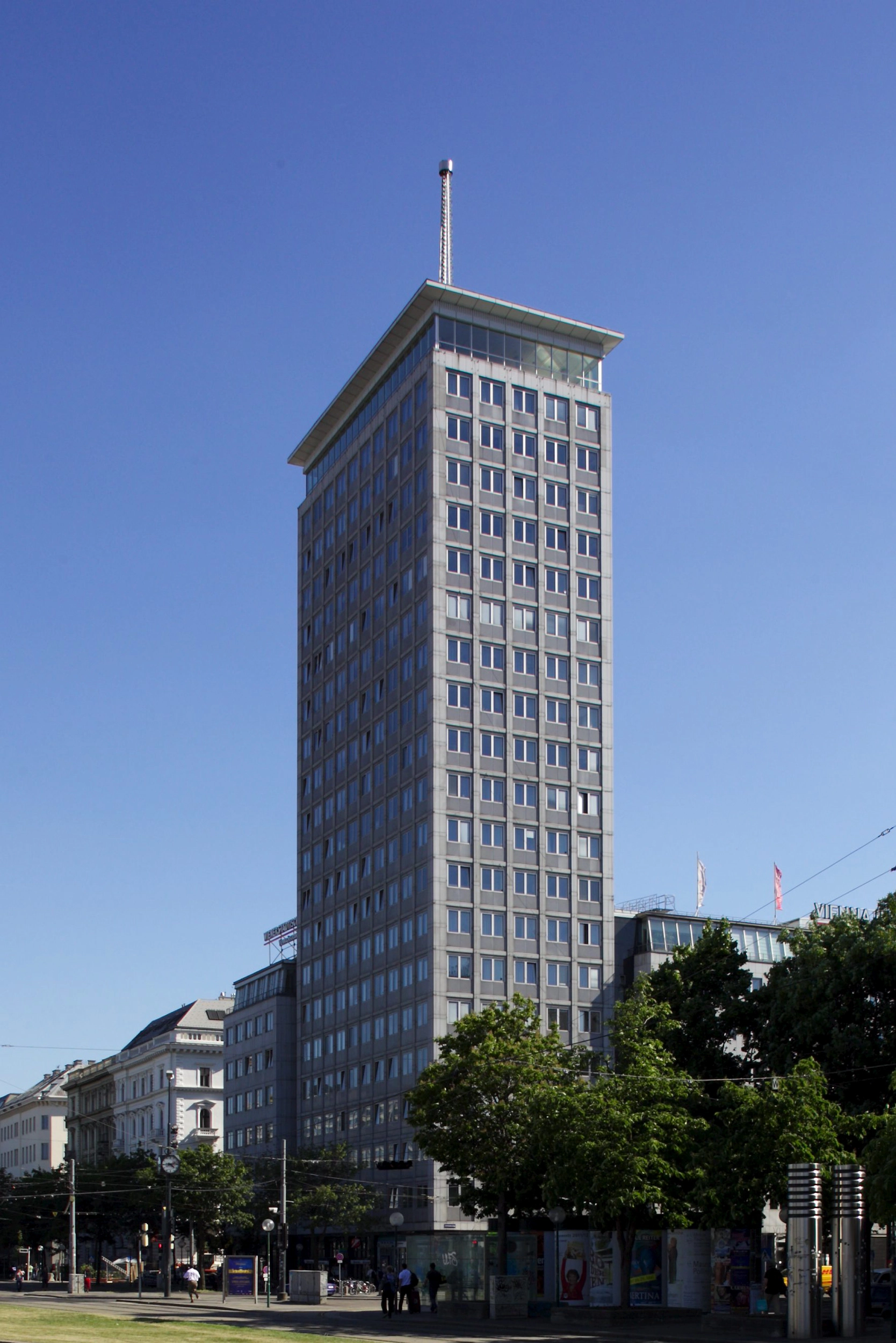
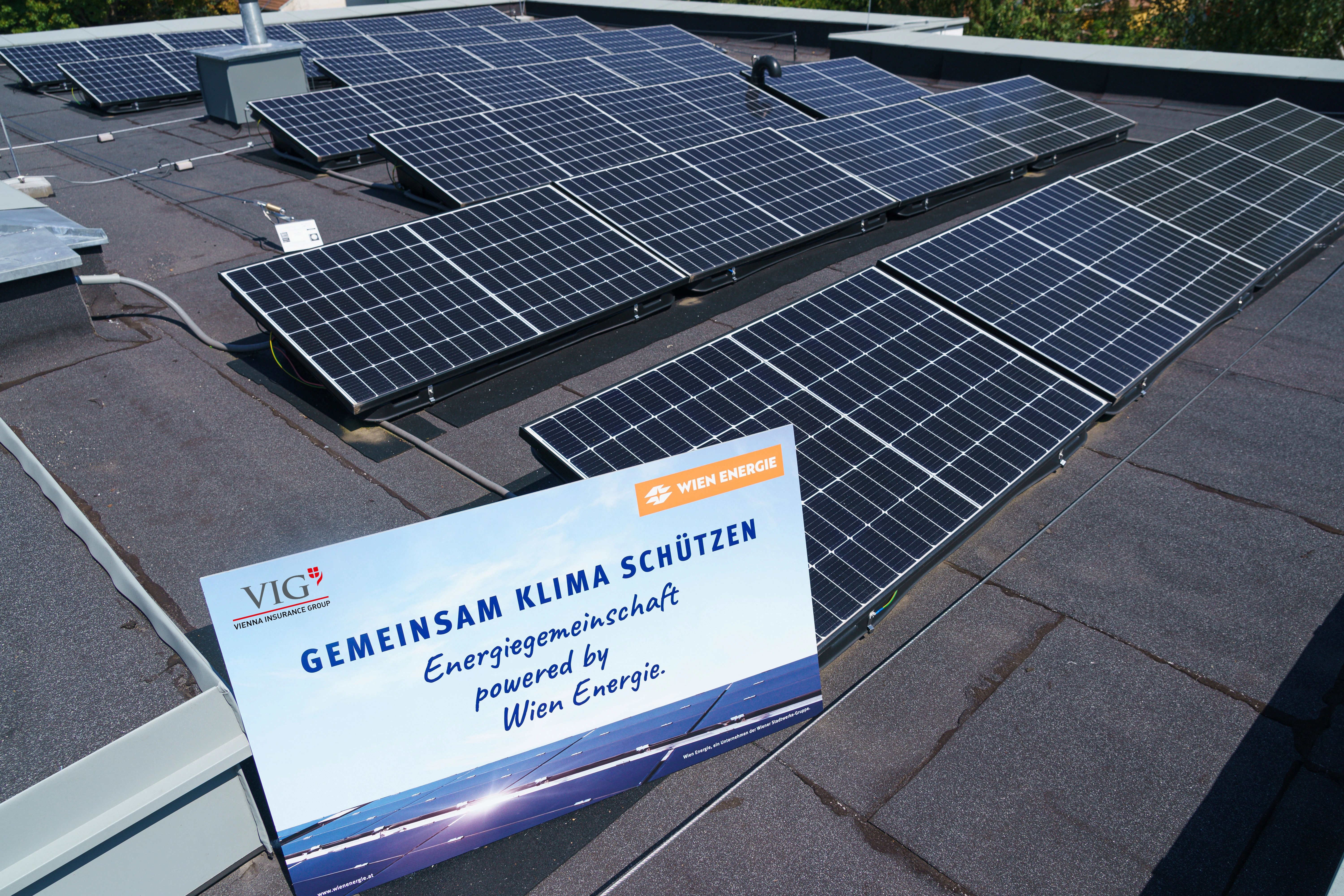
VIG is part of the first Austria-wide Energy community
Our activities in the real estate sector reach far beyond our headquarters. VIG is aiming to generate its own renewable electricity and share it between the company’s buildings throughout Austria. In order to implement this, the VIG energy community was founded with the help of Wien Energie. In the future, the energy community will supply green energy to more than half of all VIG sites in Austria. With solar and wind
power that produces a total of around three gigawatt hours per year, the energy community offers a very high production volume. The VIG energy community is therefore not only the first Austria-wide energy community, but is also one of the most powerful energy communities in
Austria. Wien Energie is a very capable partner in this respect and provides assistance with a wide range of services. In total, Wien Energie is providing six photovoltaic systems and four wind power systems for the energy community. This figure is set to increase over the coming years. This will result in savings of around 1,300 tonnes of CO2 each year. With this move, we have taken another important step towards making VIG Holding’s real estate portfolio taxonomy-aligned.
CONSERVING RESOURCES TOGETHER
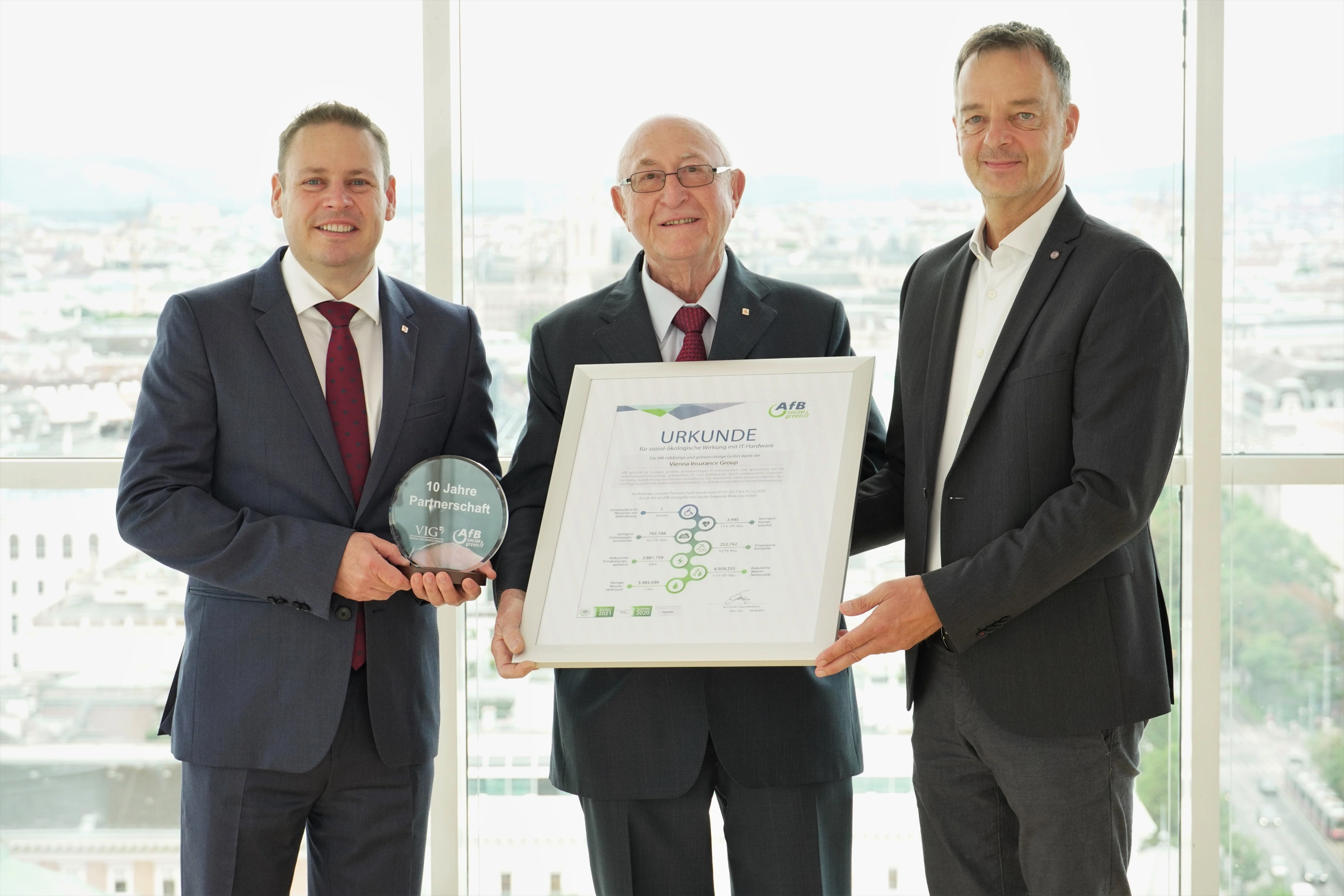
Positive effects of the VIG partnership with AfB in 2024
Six spheres of impact of sustainability
The VIG Sustainability Programme is divided into six spheres of impact in which the Group-wide sustainability efforts have been aggregated


